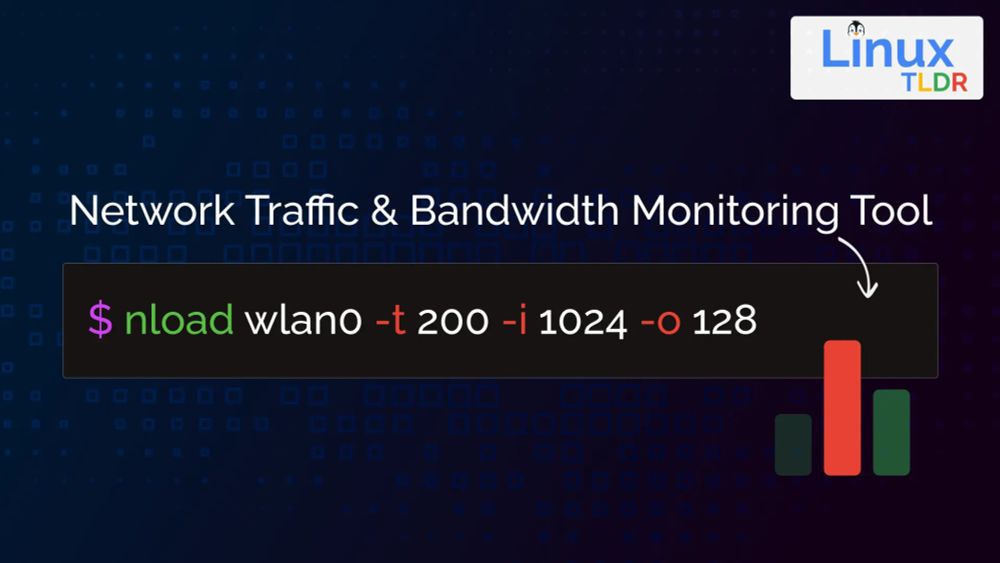KrysJose
@krysjose.bsky.social
Reposted by KrysJose
Wireshark 4.6 Open-Source Network Protocol Analyzer Released as a Major Update 9to5linux.com/wireshark-4-...
#Linux #OpenSource
#Linux #OpenSource

Wireshark 4.6 Open-Source Network Protocol Analyzer Released as a Major Update - 9to5Linux
Wireshark 4.6 open-source network protocol analyzer is now available to download with manjor new features and improvements.
9to5linux.com
October 9, 2025 at 5:21 AM
Wireshark 4.6 Open-Source Network Protocol Analyzer Released as a Major Update 9to5linux.com/wireshark-4-...
#Linux #OpenSource
#Linux #OpenSource
Reposted by KrysJose
CVE-2025-59397 - Open Web Analytics SQL Injection

Full Disclosure: CVE-2025-59397 - Open Web Analytics SQL Injection
CVE-2025-59397 - Open Web Analytics SQL Injection
Full Disclosure
mailing list archives
From: Seralys Research Team via Fulldisclosure
Date: Wed, 8 Oct 2025 12:19:56 +0000
Seralys Security Advisory | https://www.seral ...
Read more
Published Date:
Oct 09, 2025 (1 hour, 55 minutes ago)
Vulnerabilities has been mentioned in this article.
CVE-2025-59397
seclists.org
October 9, 2025 at 7:15 AM
CVE-2025-59397 - Open Web Analytics SQL Injection
Reposted by KrysJose
GitLab Security Update – Patch For Multiple Vulnerabilities That Enables DoS Attack

GitLab Security Update - Patch For Multiple Vulnerabilities That Enables DoS Attack
cybersecuritynews.com
October 9, 2025 at 8:05 AM
GitLab Security Update – Patch For Multiple Vulnerabilities That Enables DoS Attack
Reposted by KrysJose
Stealing JWT Tokens via OAuth redirect_uri Manipulation: A Critical Vulnerability

Stealing JWT Tokens via OAuth redirect_uri Manipulation: A Critical Vulnerability
By Shah kaif | “A single redirect_uri = complete JWT theft.” | LinkedIn
infosecwriteups.com
October 4, 2025 at 8:35 AM
Stealing JWT Tokens via OAuth redirect_uri Manipulation: A Critical Vulnerability
Reposted by KrysJose
How To Attack Admin Panels Successfully Part 2
How To Attack Admin Panels Successfully Part 2
Not Attacking Web Apps Admin Panels The Right Way? Continue reading on InfoSec Write-ups »
infosecwriteups.com
October 4, 2025 at 11:39 AM
How To Attack Admin Panels Successfully Part 2
Reposted by KrysJose
U.S. CISA adds Smartbedded Meteobridge, Samsung, Juniper ScreenOS, Jenkins, and GNU Bash flaws to its Known Exploited Vulnerabilities catalog

U.S. CISA adds Smartbedded Meteobridge, Samsung, Juniper ScreenOS, Jenkins, and GNU Bash flaws to its Known Exploited Vulnerabilities catalog
U.S. CISA adds Smartbedded Meteobridge, Samsung, Juniper ScreenOS, Jenkins, and GNU Bash flaws to its Known Exploited Vulnerabilities catalog.
securityaffairs.com
October 4, 2025 at 4:09 PM
U.S. CISA adds Smartbedded Meteobridge, Samsung, Juniper ScreenOS, Jenkins, and GNU Bash flaws to its Known Exploited Vulnerabilities catalog
Reposted by KrysJose
Discord confirms a data breach through a third-party vendor, exposing user IDs, emails, and even government IDs. Meanwhile, hackers on #Telegram claim responsibility.
Read: hackread.com/discord-data...
#Discord #DataBreach #CyberSecurity #Privacy #InfoSecurity #Hacking
Read: hackread.com/discord-data...
#Discord #DataBreach #CyberSecurity #Privacy #InfoSecurity #Hacking

Discord Data Breach: Hackers Access IDs, Billing Details and Support Chats
Follow us on Bluesky, Twitter (X), Mastodon and Facebook at @Hackread
hackread.com
October 4, 2025 at 4:36 PM
Discord confirms a data breach through a third-party vendor, exposing user IDs, emails, and even government IDs. Meanwhile, hackers on #Telegram claim responsibility.
Read: hackread.com/discord-data...
#Discord #DataBreach #CyberSecurity #Privacy #InfoSecurity #Hacking
Read: hackread.com/discord-data...
#Discord #DataBreach #CyberSecurity #Privacy #InfoSecurity #Hacking
Reposted by KrysJose
Nload: Monitor Linux Network Traffic and Bandwidth Usage
linuxtldr.com/installing-n...
linuxtldr.com/installing-n...

Nload: Monitor Linux Network Traffic and Bandwidth Usage
Monitor the graph of inbound and outbound network traffic and bandwidth usage in real time with the Nload command-line utility in Linux.
linuxtldr.com
June 19, 2025 at 2:18 AM
Nload: Monitor Linux Network Traffic and Bandwidth Usage
linuxtldr.com/installing-n...
linuxtldr.com/installing-n...
Reposted by KrysJose
Curl Like a Hacker: How Ethical Hackers Use Curl to Outsmart Web Defenses

Curl Like a Hacker: How Ethical Hackers Use Curl to Outsmart Web Defenses
Ever wondered how hackers see your website? Spoiler alert: It’s probably not as secure as you think!
infosecwriteups.com
June 19, 2025 at 7:11 AM
Curl Like a Hacker: How Ethical Hackers Use Curl to Outsmart Web Defenses
Reposted by KrysJose
Roundcube: CVE-2025–49113

Roundcube: CVE-2025–49113
Who am I?
I’m Chetan Chinchulkar (aka omnipresent), a cybersecurity enthusiast, software developer, and security researcher ranked in the…
infosecwriteups.com
June 19, 2025 at 7:32 AM
Roundcube: CVE-2025–49113
Reposted by KrysJose
Trinper Backdoor Exploiting Chrome Zero-Day CVE-2025-2783

Trinper Backdoor Exploiting Chrome Zero-Day CVE-2025-2783
A critical vulnerability in Google Chrome, tracked as CVE-2025-2783, has been exploited in cyberattacks deploying the Trinper backdoor. The flaw, a sandbox escape vulnerability, enables attackers t…
thecyberthrone.in
June 18, 2025 at 5:08 AM
Trinper Backdoor Exploiting Chrome Zero-Day CVE-2025-2783
Reposted by KrysJose
Critical Linux Root Exploit Chain Discovered in PAM & UDisks, Affecting Major Distros

Critical Linux Root Exploit Chain Discovered in PAM & UDisks, Affecting Major Distros
Qualys uncovered two critical Linux flaws (CVE-2025-6018, CVE-2025-6019) allowing local root privilege escalation via PAM and UDisks. Patching is urgent for major distros.
securityonline.info
June 18, 2025 at 5:13 AM
Critical Linux Root Exploit Chain Discovered in PAM & UDisks, Affecting Major Distros
Reposted by KrysJose
Blog: "ClamAV: El antivirus open source en Linux y servidores"

ClamAV: El antivirus open source en Linux y servidores
Blog sobre informática, tecnología y seguridad con manuales, tutoriales y documentación sobre herramientas y programas
blog.elhacker.net
June 18, 2025 at 8:30 AM
Blog: "ClamAV: El antivirus open source en Linux y servidores"
Reposted by KrysJose
CISA Warns of iOS 0-Click Vulnerability Exploited in the Wild

CISA Warns of iOS 0-Click Vulnerability Exploited in the Wild
cybersecuritynews.com
June 17, 2025 at 8:48 AM
CISA Warns of iOS 0-Click Vulnerability Exploited in the Wild










